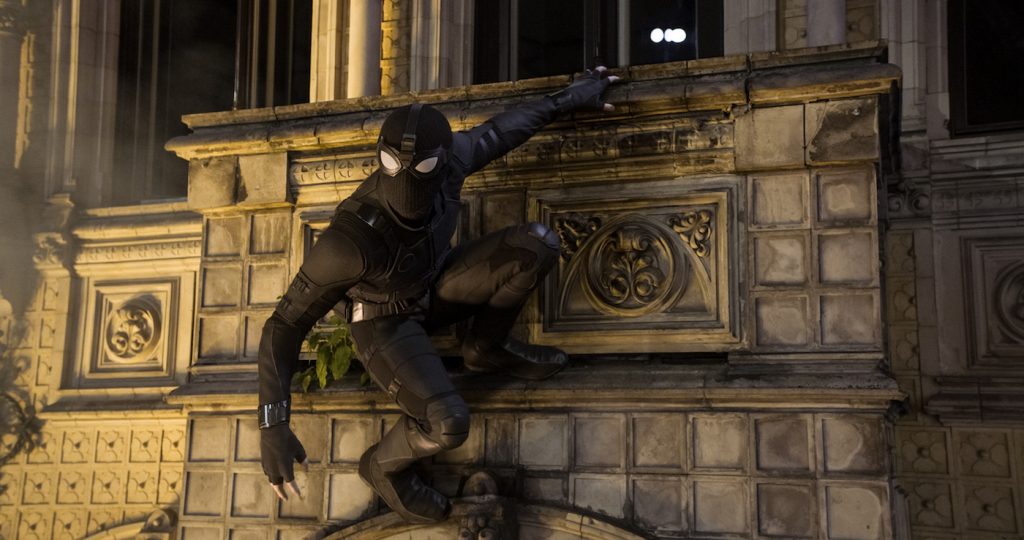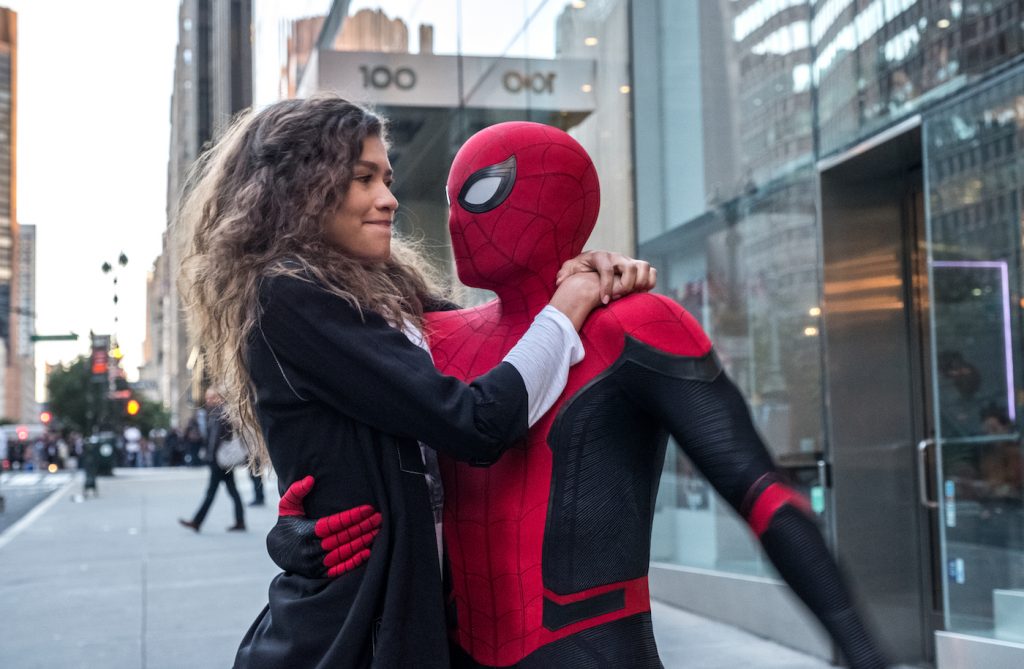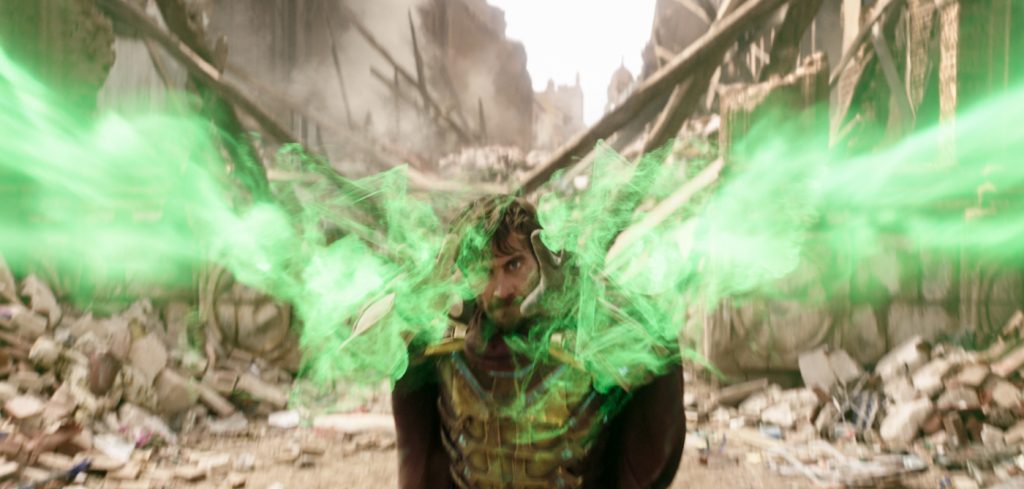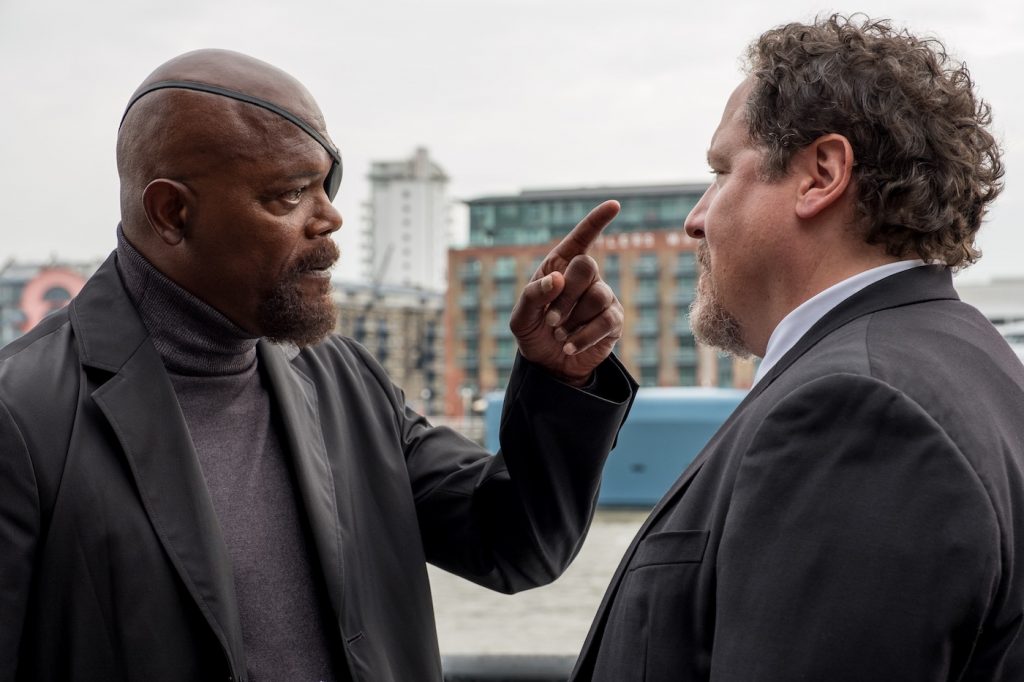How the Spider-Man: Far From Home Writers Crafted a Swinging Summer Hit
They first worked together on TV satire American Dad, then mastered the dysfunctional dark comedy of Community before breaking into features by subverting superhero conventions with their neurotic title character in The Lego Batman Movie. Now, screenwriters Erik Sommers and Chris McKenna are riding high as the team who scripted Spider-Man: Far From Home. The rare summer hit that’s won over critics as well as audiences, this second of three Tom Holland-as-Spider-Man movies has a 90 percent fresh rating from Rotten Tomatoes.
In the wake of their box office tsunami, Los Angeles-based Summers and McKenna spoke from their car phones about their deft blend of comedy, drama, and Marvel Cinematic Universe through lines that fuel Peter Parker’s European vacation in Far From Home.
We keep hearing about some kind of “board” where Marvel President Kevin Feige and his team plot out all the Marvel Cinematic Universe movies. How does that actually work?
Erik Sommers: I’d love to imagine that there’s a secret room that Chris and I have never been allowed in with some huge board that maps out everything and has all these secrets. But to my knowledge, there is not an actual [board]. Certainly, Kevin Feige has ideas for where things are going to go and there are lots of plans that Chris and I are not necessarily privy to. And they do a very good job of letting us know if there are things to set up or things we should avoid because they would impact another project or something. They’re very good at minding how it all connects.
Chris McKenna: Far as that board goes, I have seen it, Erik has not. (laughs).
Sommers: When we start on a movie like this, the folks at Marvel have typically assembled a document and discussed internally what they’d like to see…but that’s really just a launching pad. Once we’re all in the room with the director, the folks from Marvel, Pascal Pictures, things can change drastically because we’re all trying to chase the best story and the best movie.

When you guys started working on your first Marvel Cinematic Universe movie Ant-Man and the Wasp, were you startled by the level of coordination feeding into the MCU.
McKenna: We’d done a little punch-up work unofficially on some other MCU stuff before that. And since Erik and I come from television, we’re used to telling stories about ongoing relationships and character narratives. So we love it.
How did you approach Iron Man’s legacy as a story element for Far From Home?
Sommers: The relationship between Peter Parker and Tony Stark had been built over several [MCU] movies and it was such a big relationship there was no question in anyone’s mind that Far From Home had to deal with the aftermath of losing Tony and how that would affect Peter.
McKenna: And it’s not only as an emotional story for Peter Parker, but all of us were going through this in our own ways: Like, how do we make a Marvel movie without Tony Stark? That’s why Iron Man looms so large over this movie and results in this crisis for Peter Parker.

Far From Home intersperses big action scenes, romantic moments with Sendaya’s MJ character and dramatic bits with Jake Gyllenhaal as Mysterio, with a fair amount of comedy, which helps give the movie a feel-good summer popcorn movie vibe. How did you figure out the tone for this film?
Sommers: Coming off this emotionally draining one-two punch of Infinity Wars and Endgame, we had to deal with some weighty issues but we also knew everyone wanted the movie to be fun. So for us, it became a matter of picking our shots as we went through the story: Where are we going to go for comedy and where are we going to go for a more serious moment? We knew we could get comedy from Peter ‘s classmates and his teachers. And sometimes, we found comedy just by kicking around ideas in the room with Marvel and Pascal Pictures and [director] Jon Watts.

For example, Peter’s high school classmates do that funny little “In Memorium” segment right at the top of the movie.
Summers: We had to explain Endgame stuff relating to the blip or the snap and debated different ways of moving through that information. Someone on the creative team pitched the idea of using the school news to explain it. Once it became clear that we could explain the snap comedically, it allowed us to save the truly heavy moments.
McKenna: And also, after all the drama of Endgame, it was a fun way to sort of announce that we’re not taking ourselves too seriously.

Nick Fury quote-unquote plays a pretty big role in Far From Home. How did you want to use Samuel L. Jackson in this story?
Sommers: Audiences love Nick Fury and we love Nick Fury so we were excited to put him in Far From Home. He sort of grounds things and lets you know you’re watching an MCU movie.
McKenna: When Nick and Peter first meet up in the hostel in Venice, Nick’s trying to do what he’s done in other movies, explaining this giant crisis but he keeps getting interrupted by these high schoolers and all this nonsense related to their class trip. It was fun to mash together with a Nick Fury-type mission with a summer vacation in Europe for Peter and his friends.
Sommers: That’s one of the pleasures of working on this iteration of Spider-Man. Now that he’s in the MCU, you get to have him interacting with all these characters you never could before. Any time we can do that, it makes the movie richer.
Marvel movies have become famous for their end-credits sequences, and. and you sprang a couple of huge surprises in this one.
Sommers: It’s always exciting to be with an audience when the credits come and they stay to find out ‘Oh, is this credits sequence going go drop some sort of bombshell revelation that has repercussions moving forward?’ Working on these end credits and then watching the fans experience them – – that’s really fun.
For more Far From Home coverage, check out our interview with the film’s production designer here.
Featured image: Spider-Man in Columbia Pictures’ SPIDER-MAN: ™ FAR FROM HOME. Courtesy of Sony Pictures



